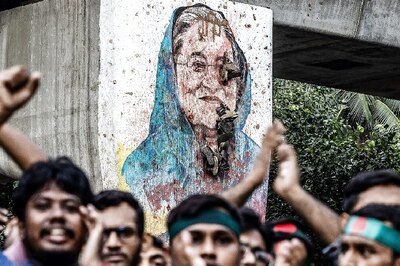
views
New Delhi: With issuance of presidential Order, the NDA government has resorted to legal interpretations of the constitutional provisions to do away with Article 370, which granted special and autonomous status to Jammu and Kashmir.
The presidential order brought about changes in the text of the Constitution to imply that henceforth, all provisions of the Constitution shall now apply also to J&K.
"All provisions of the Constitution, as amended from time to time, shall apply in relation to the State of Jammu and Kashmir and the exceptions and modifications subject to which they shall so apply..." stated the order, notified on Monday.
Since there is no elected government in place at this time in J&K, the presidential order states that the Governor shall exercise the powers of the elected government and will express the will of the state legislature in making recommendations to the President in relation to Article 370.
"References to the Government of the said State shall be construed as including references to the Governor of Jammu and Kashmir acting on the advice of his Council of Ministers," said the notification.
Another crucial part of this presidential order is that it amended the term 'Constituent Assembly' to mean 'Legislative Assembly' of the state.
This amendment was essential since Article 370, in its sub-clause (3), has itself laid down that Article 370 can cease to operate by way of a presidential order but a recommendation of the 'Constituent Assembly' shall have to be placed before him.
Therefore, the order first gave authority of the Legislative Assembly to the Governor, and then changed the ‘Constituent Assembly’ to mean ‘Legislative Assembly’, which in turn means that the president could have issued the order upon a recommendation by the Governor.
Since the state is under Governor’s rule, all the powers of the state legislature are currently vested with Parliament of India. Thus, the abrogation of Article 370 can be done by presidential order read in conjunction with consent by both House of Parliament by a simple majority.




















Comments
0 comment